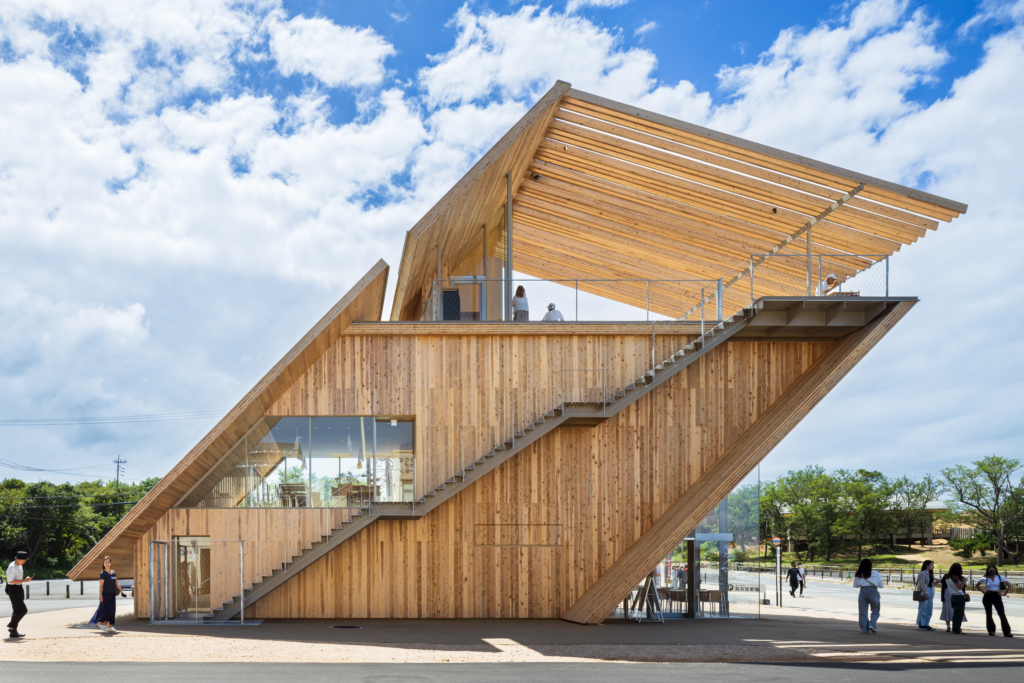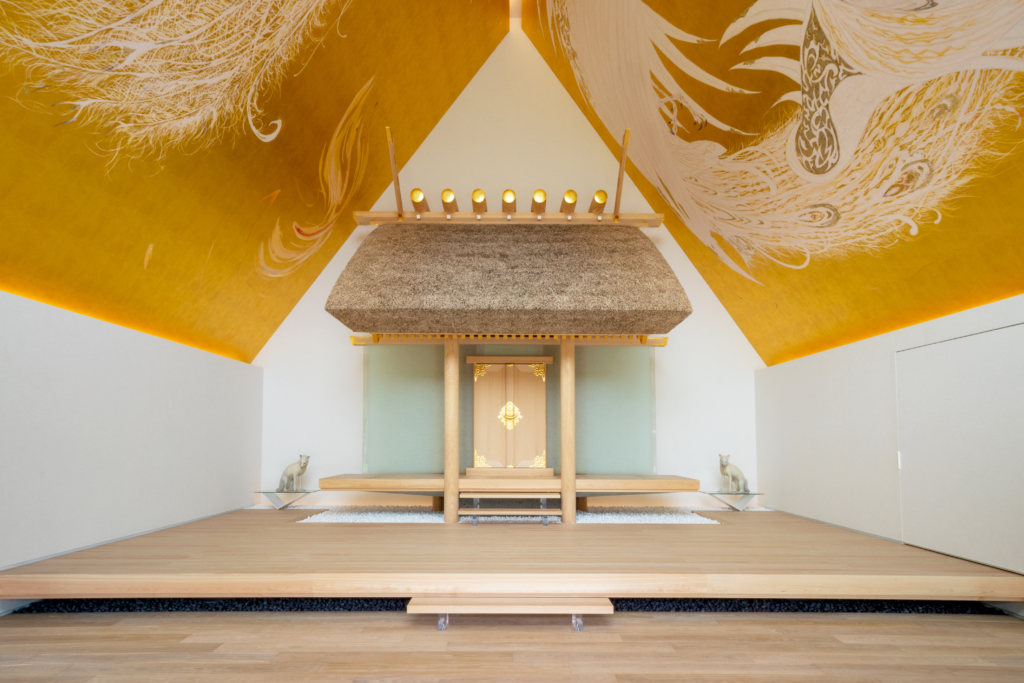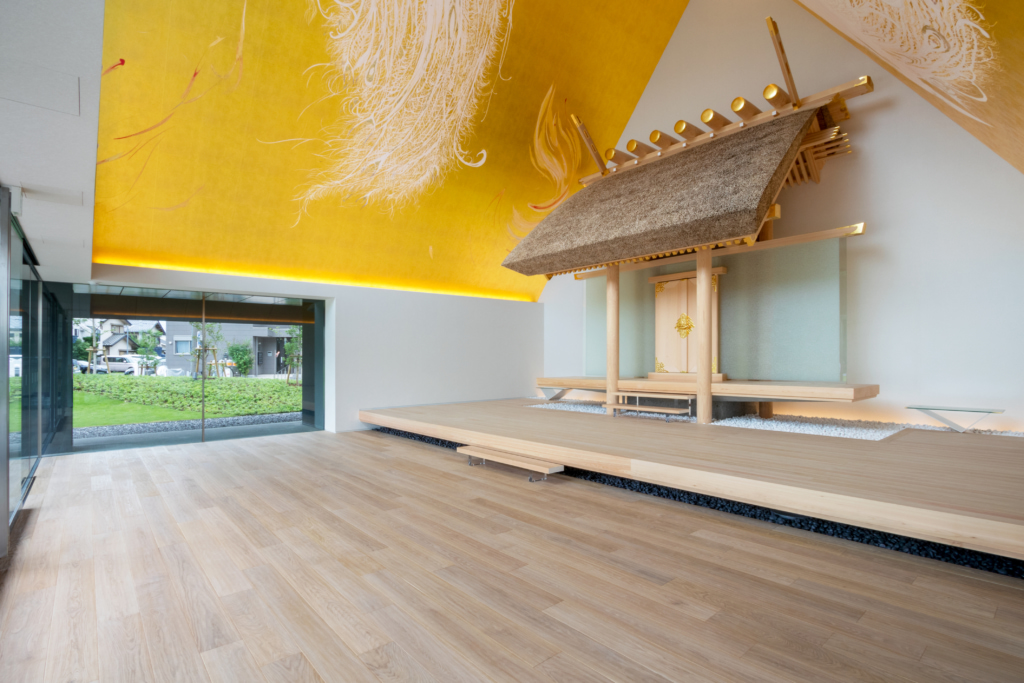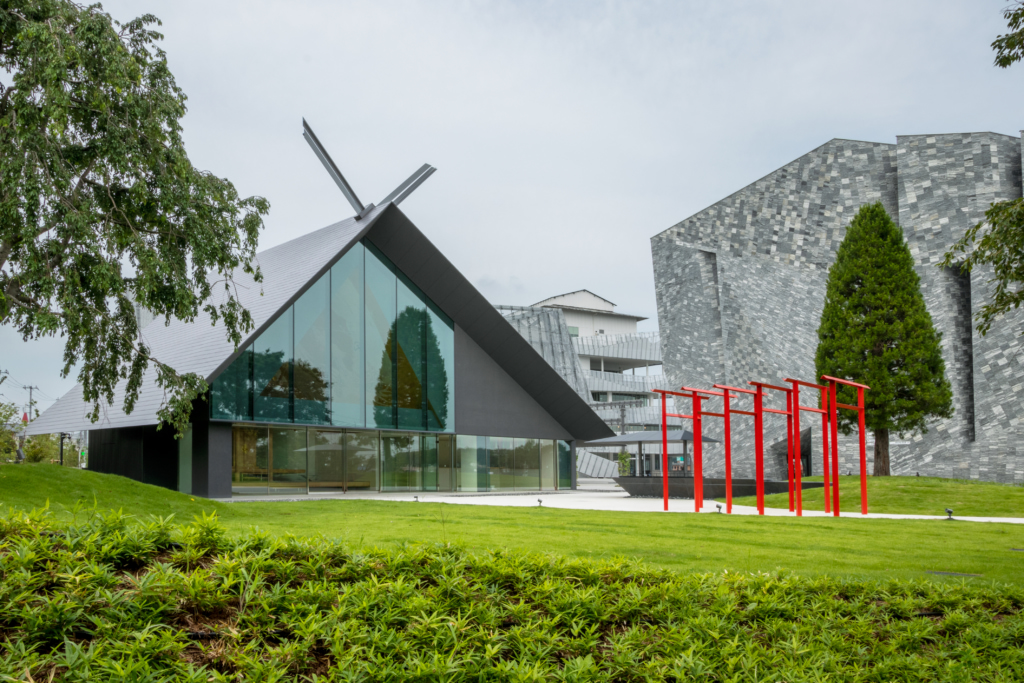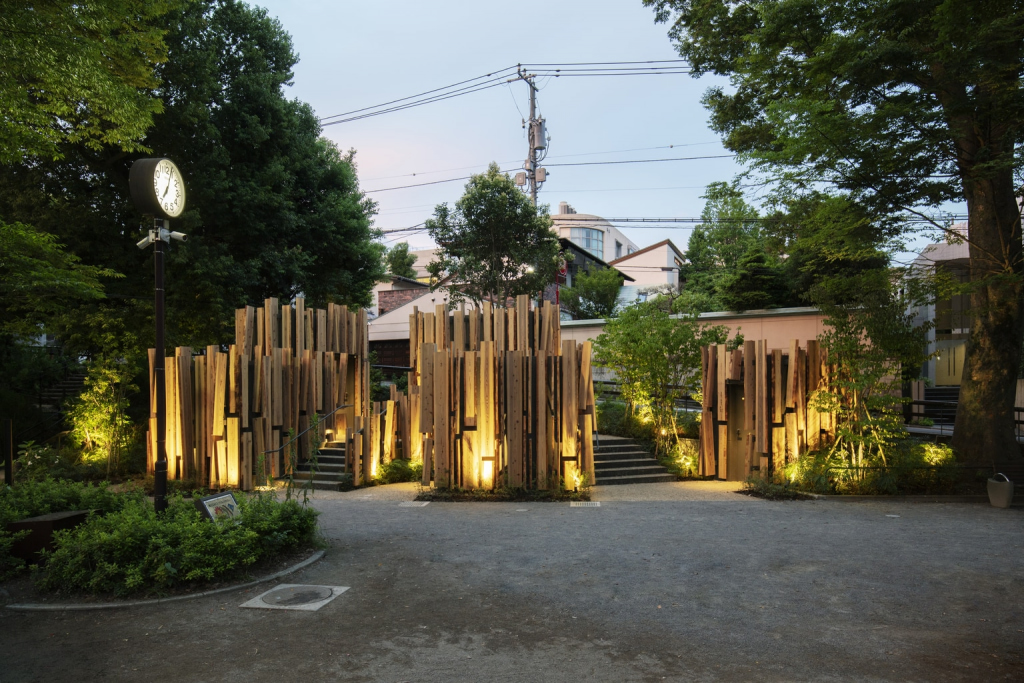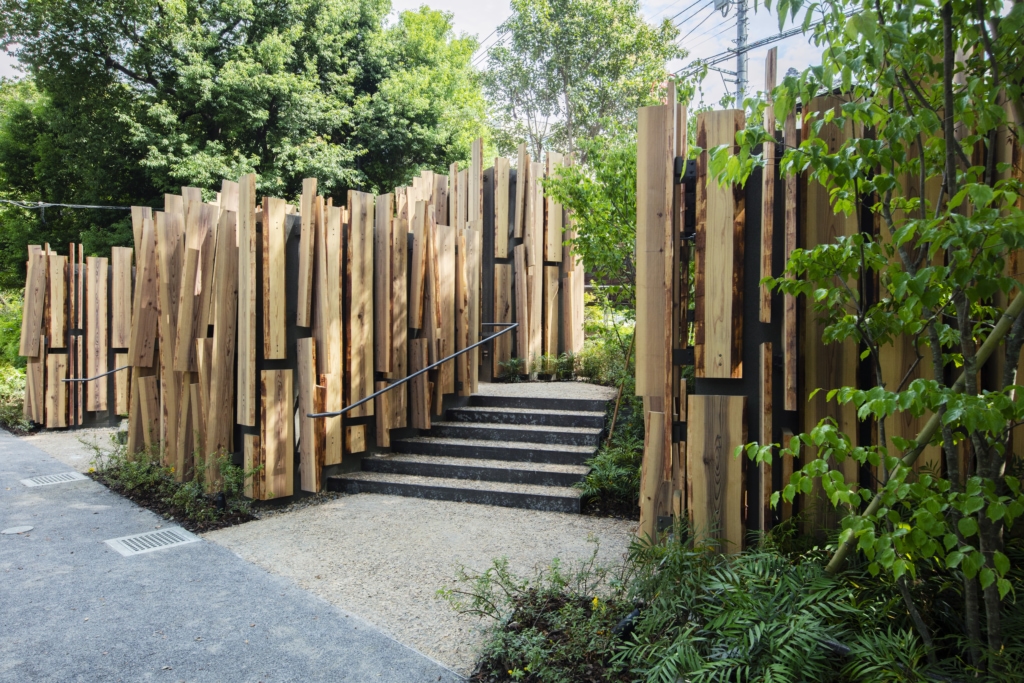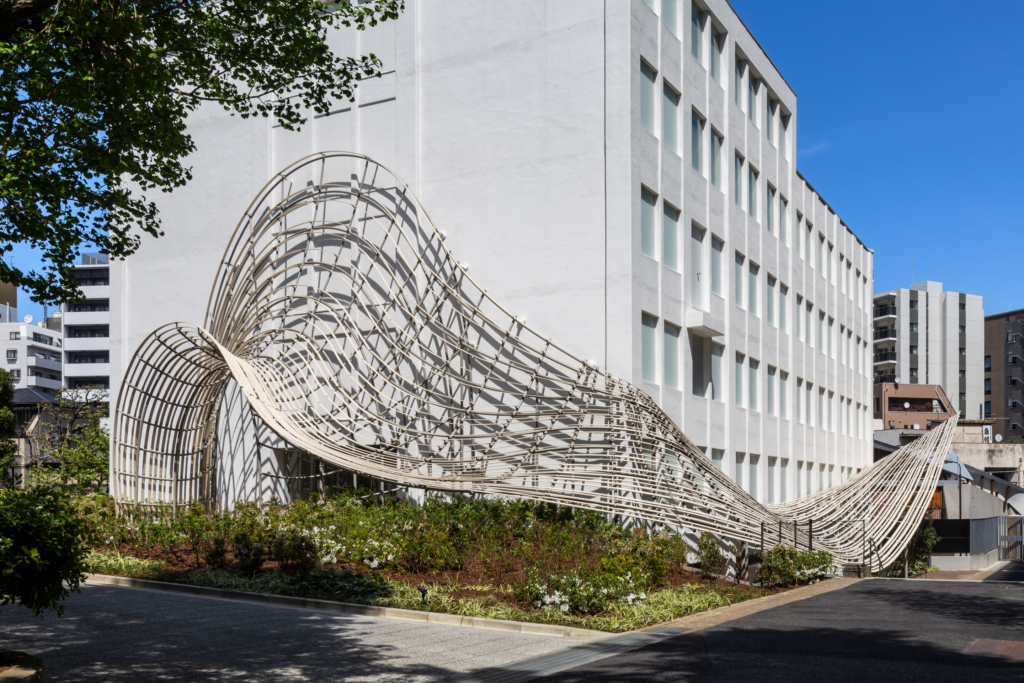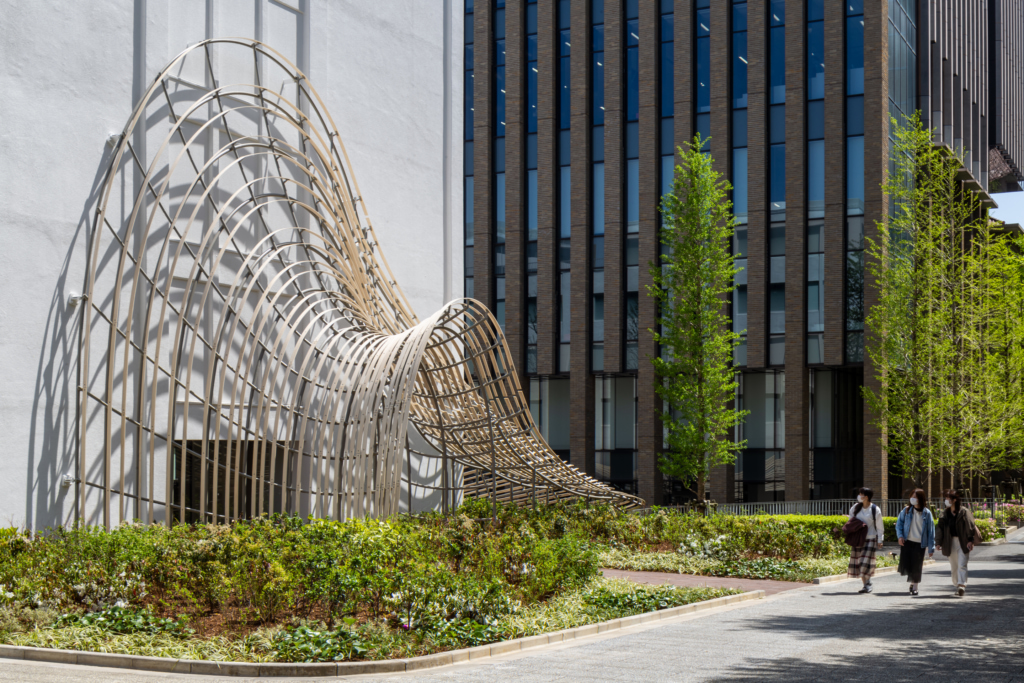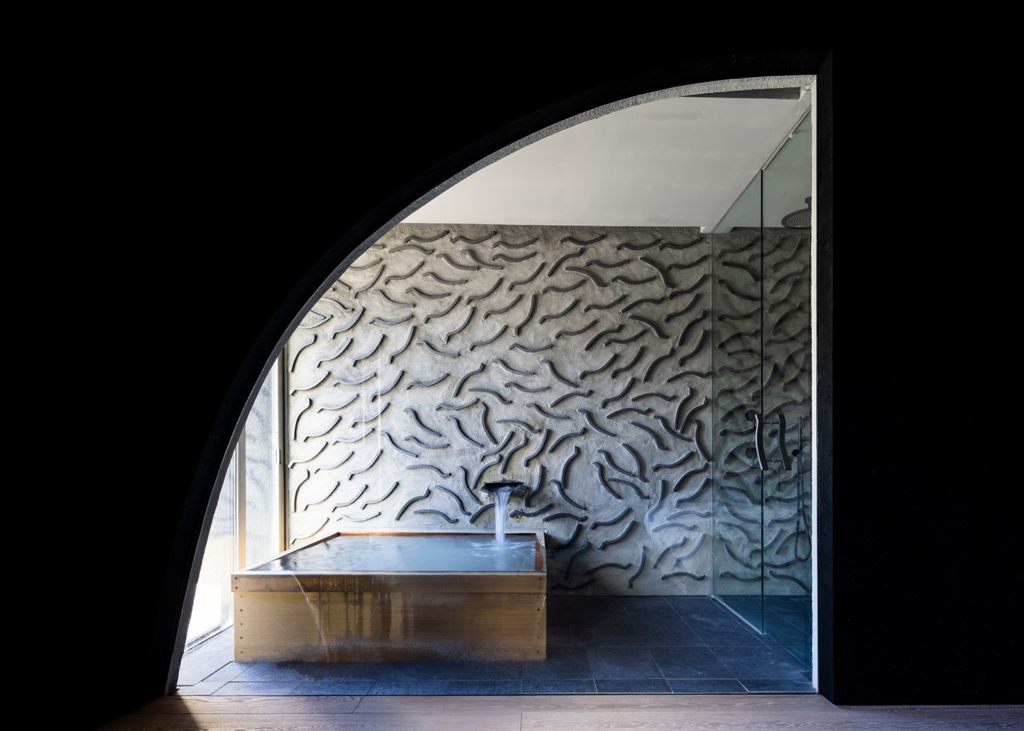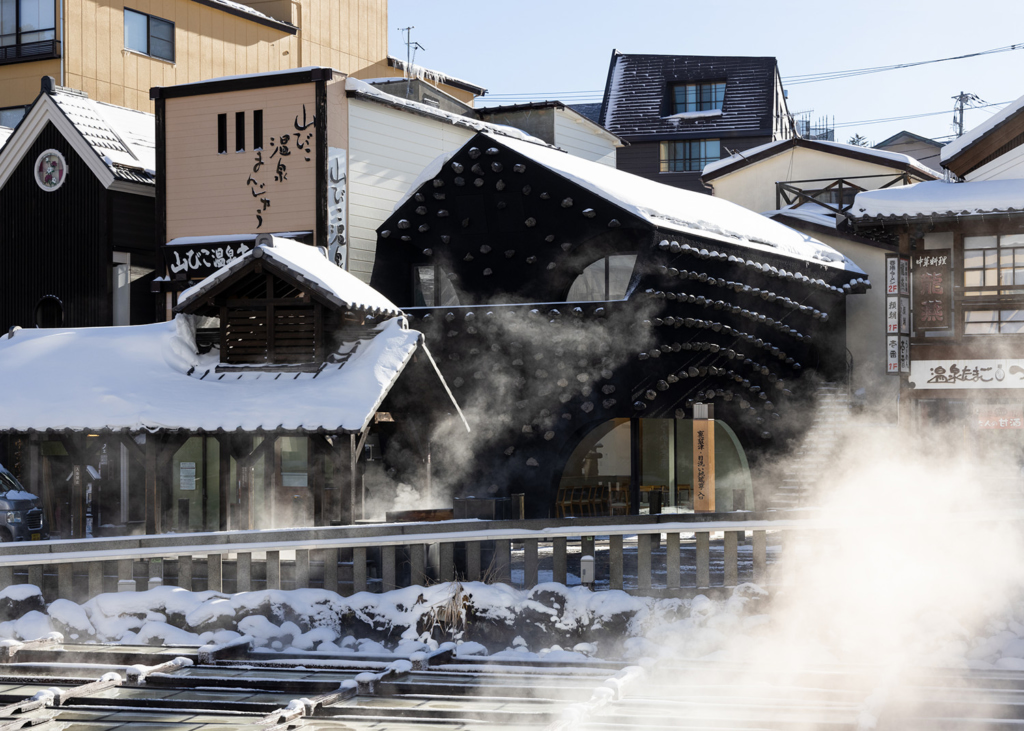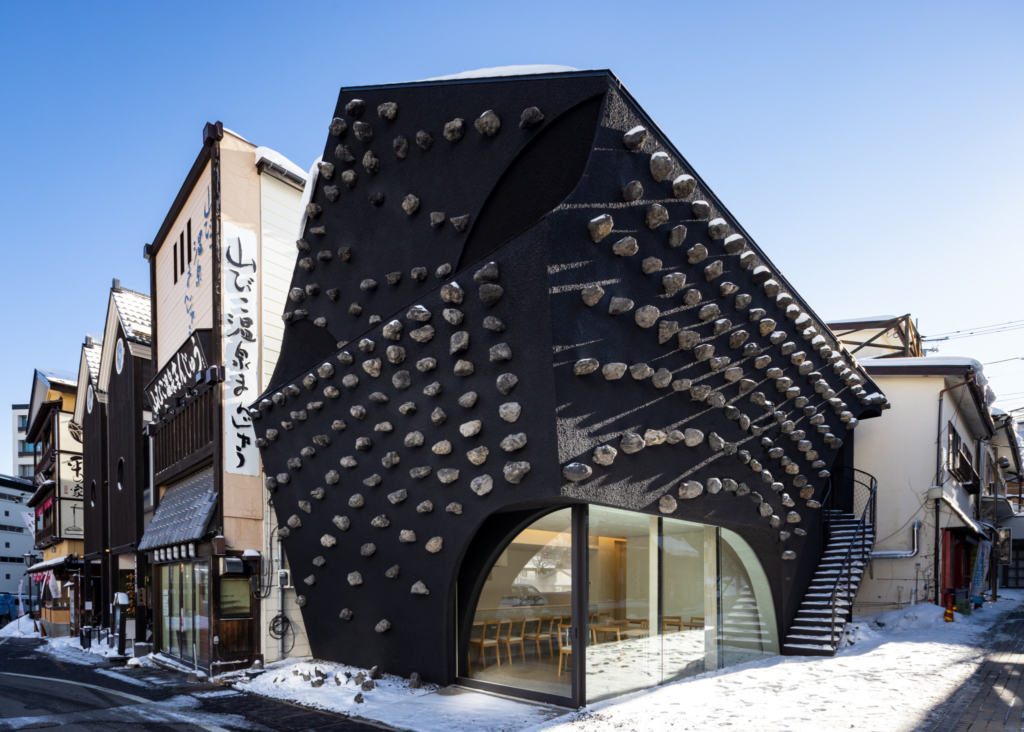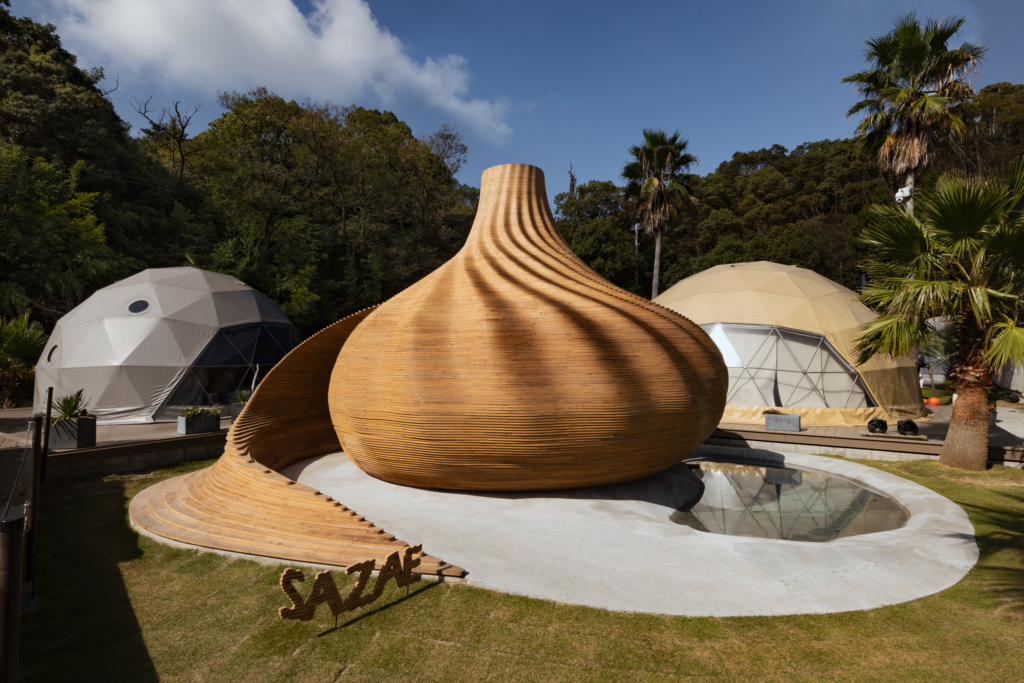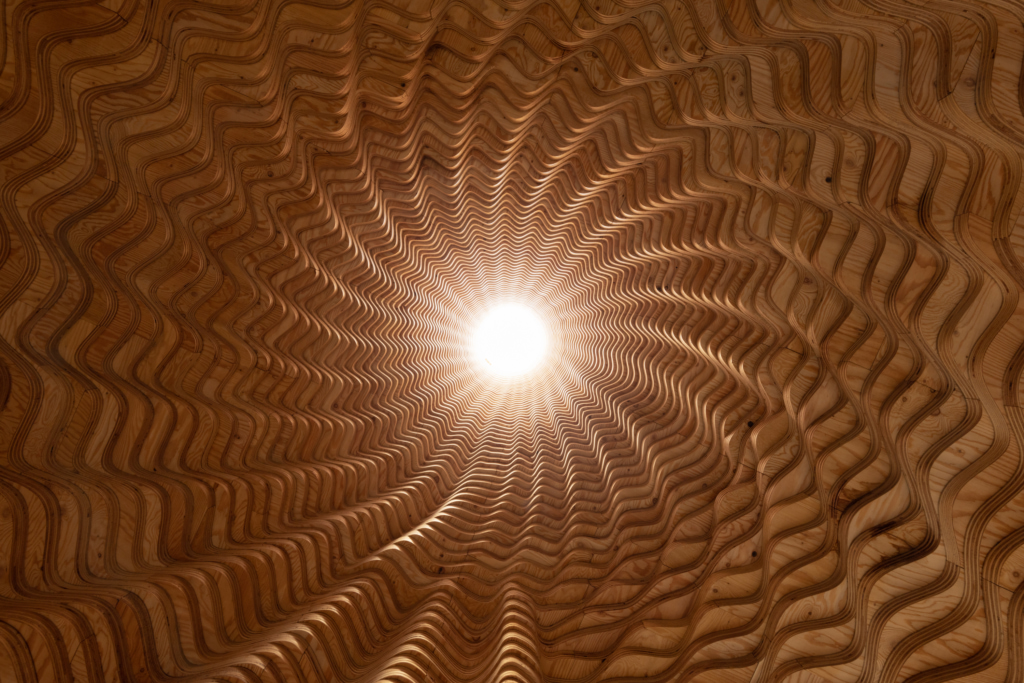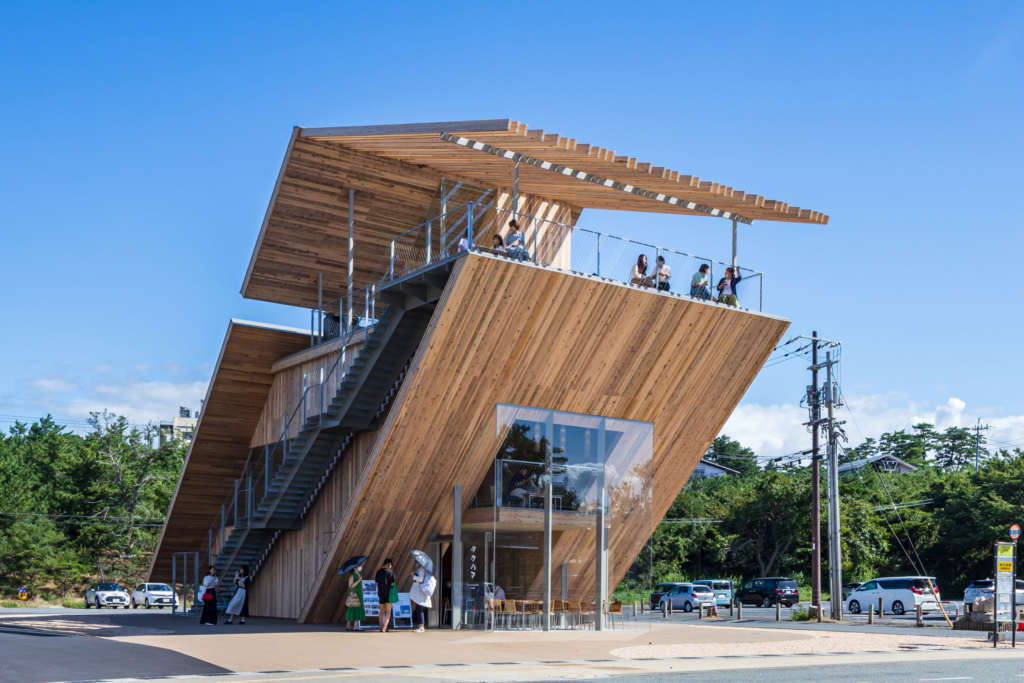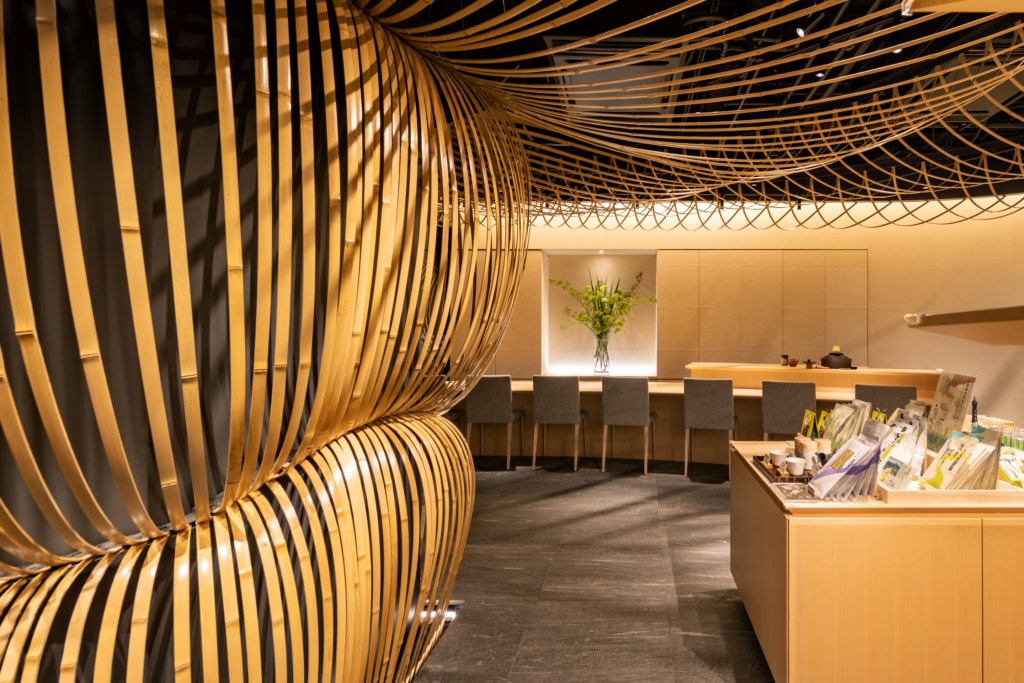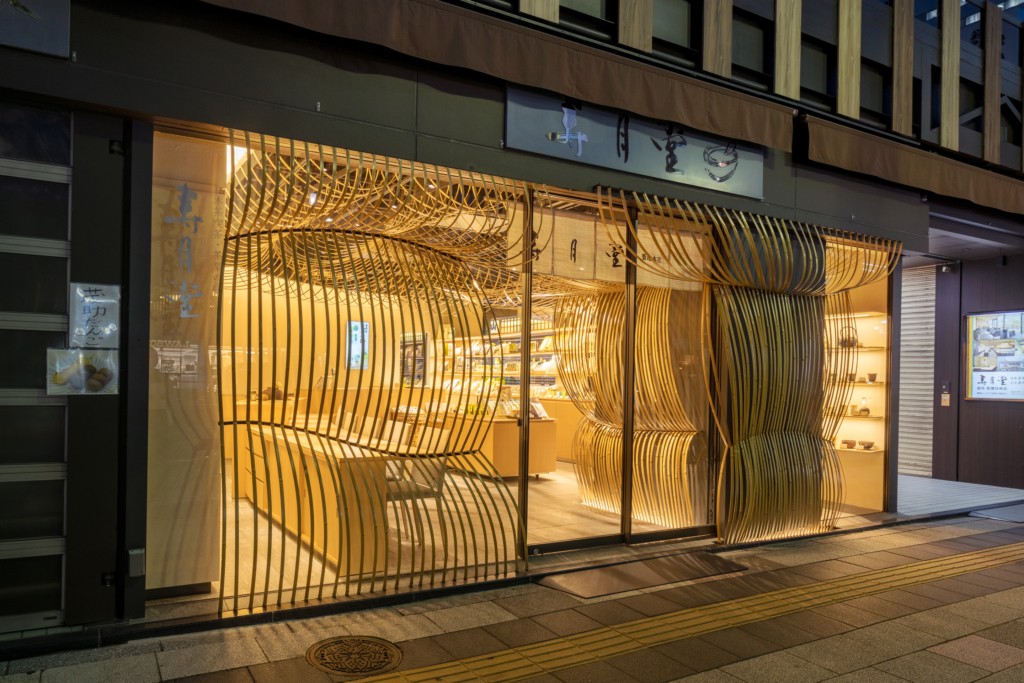Kadokawa Culture Museum and Musashino Reiwa Shrine (Tokorozawa, Saitama, 2020)
Designed together with Kajima Design, the Kadokawa Culture Museum takes inspiration from surfacing magma. Its asymmetric granite structure stands out in an otherwise regular suburban area outside Tokyo. Next to this futuristic castle-like building stands the Musashino Reiwa Shrine — a fusion of past, present and future. Following religious structural guidelines, KKAA innovates with its materials by constructing metal torii gates and a LED-lit main gate encased in wire. This modern take on the Shinto shrine has a pop culture veneer too, with 88 anime pilgrimage locations inscribed on flags flanking the torii gates, as well as a decorative golden ceiling painted by Yoshitaka Amano, a well-known character designer for the Final Fantasy series.
Nabeshima Shoto Park Toilet (Shibuya, Tokyo, 2021)
Part of the multi-award-winning Tokyo Toilet project, Kuma is one of 16 leading architects tasked to design a public restroom in Shibuya in their style. For KKAA that meant following nature’s call and covering the buildings in organic, angled pieces of cedarwood on the outside and cross-sections of repurposed cherry and metasequoia wood as interior decoration. There are five independent units of different facilities blending into the lush nature of Shoto Park. The idea captures the zeitgeist with sustainability, diversity and openness at the heart of this small “toilet village.”
The Haruki Murakami Library (Waseda, Tokyo, 2021)
Kuma believes that in the future 80% of all architecture will be renovations of some form. “Recycling is exciting and emotional for me,” he says.
The Waseda International House of Literature (also known as The Haruki Murakami Library) is a good example of revamping an older structure. The simple rectangular university building was painted white and was dressed in a three-dimensional wooden screen canopy — a nod to the reimagined interior of a wooden tunnel penetrating through the building. The KKAA team took inspiration from the magical realism in Haruki Murakami’s novel that bends and connects narrative dimensions.
Kimuraya Onsen Ryokan (Kusatsu, Gunma, 2021)
A perfect balancing act of blending in and standing out, this one-of-a-kind ryokan with only one room is a black asymmetric fortress made with rare local materials. Magma stones from Mount Asama adorn the exterior, while washi paper mixed with crushed stones lines the inside walls. The curved geometric patterns both inside and outside resonate with the wavy movements of steam rising from a hot spring, as well as the winding streams near the historic hot spring town of Kusatsu.
Sana Mane Sauna Sazae (Naoshima, 2022)
The art island of Naoshima is no stranger to out-of-the-box thinking, so this twirling structure fits right in. Both the name and shape of this organic wooden sauna come from sazae, or Japanese turban shell, embodying the KKAA architectural principle of gently folding into nature’s image. The painstakingly stacked wooden layers create natural pleats that translate to terraced seating inside. Natural light seeps in solely through the roof opening, creating a meditative experience.
Tottori Takahama Café (Tottori, 2022)
Overlooking the Tottori Sand Dunes, this two-in-one observatory and café envisioned as a “staircase to the sky” resembles a gentle swell of sand itself. The warm laminated timber exterior blends with the fawn color of the dunes. The interior is attuned to local craftsmanship, showcasing pottery and washi paper. The bathroom sinks use a deep green and black glazing — typical of Tottori-sourced ceramics — made by Nakai-gama, while the light pendants are decorated with sand-sprinkled washi paper.
Jugetsudo Tea Shop (Tsukiji, Tokyo, 2022)
KKAA drew inspiration from bamboo matcha whisks for the interiors of both the Paris and Kabukiza Jugetsudo stores. This third location in Tsukiji follows the same concept with the added element of openness, reminiscent of the bamboo umbrellas used in outdoor tea ceremonies. The flexible bamboo fills up the space with organic curves, yet warps it into a ballooning space. It playfully spills onto the street, catching and inviting customers for a moment of tea and zen.

